Everyone needs goals. Hence this life list. In the United States, a good case could be made that one of them should be to take more time off. Americans have notoriously few paid vacation days: 12, compared to 21 for Canadians, 23 for the Brits, and 39 for the French. WhatÔÇÖs more, you may be hard pressed to find people who actually use all their vacation days. According to a 2010 study by , the travel company, Americans earned an average of 15 vacation days (paid and unpaid), but only used 12 of them. Who hasnÔÇÖt heard a friend bragging about how many hours they put in last week, or how late they stayed at the office? WhatÔÇÖs the problem? Even if you love your work, taking time off will make you more effective at it. The output per worker in most west European companies, even in France, is the same as the output for American workers, despite far less time at work. Plus, doctors agree, taking more time off, youÔÇÖll be more creative, feel less stress and stay more healthy. One more reason you should take time off? You're gonna need it to complete this list.
To start things off right, find an inspiring quote for motivation. Here's our pick.
ÔÇťOne final paragraph of advice: do not burn yourselves out. Be as I amÔÇöa reluctant enthusiastÔÇŽ.a part-time crusader, a half-hearted fanatic. Save the other half of yourselves and your lives for pleasure and adventure. It is not enough to fight for the land; it is even more important to enjoy it. While you can. While itÔÇÖs still here. So get out there and hunt and fish and mess around with your friends, ramble out yonder and explore the forests, climb the mountains, bag the peaks, run the rivers, breathe deep of that yet sweet and lucid air, sit quietly for a while and contemplate the precious stillness, the lovely, mysterious, and awesome space. Enjoy yourselves, keep your brain in your head and your head firmly attached to the body, the body active and alive, and I promise you this much; I promise you this one sweet victory over our enemies, over those desk-bound men and women with their hearts in a safe deposit box, and their eyes hypnotized by desk calculators. I promise you this; You will outlive the bastards.ÔÇŁ
ÔÇôEdward Abbey
Dive the Great Barrier Reef
Or, better yet, somewhere just beyond its edge with just as many fish, but fewer bug-eyed tourists
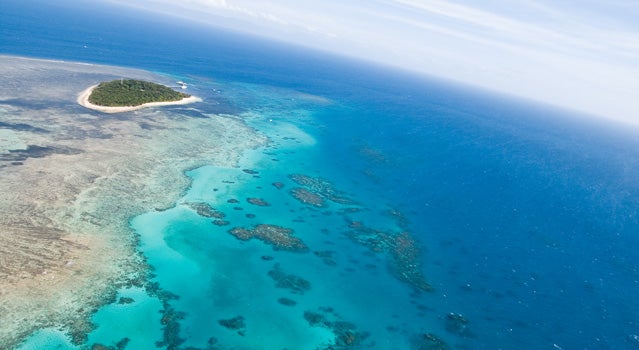
The Great Barrier Reef has been called the only living thing that can be seen from spaceÔÇöa complex collage of interlocking coral stretching 1,250 miles along Australia's northeast coast. It's also been called the best diving in the world. The best of the best? Remote coral-ringed Lizard Island, 17 miles off the coast at the Great Barrier Reef's northern tip, home to 1,500 species of fish, but only 80 resort guests, a few coral researchers at a field station, and maybe a hearty camper. Snorkel the inner reef just steps from an open-plan villa, or take a 50-minute boat ride to the outer reef to plunge into shark alley and the famed Cod Hole. Afterwards visit spa or lounge on one of the island's 24 white sand beaches. At $1,444 a day, all-inclusive, the resort isn't cheap, but hey, that's why they call this thing a bucket list.
Night-Ski Hokkaido
Go chest deep in NisekoÔÇÖs powder
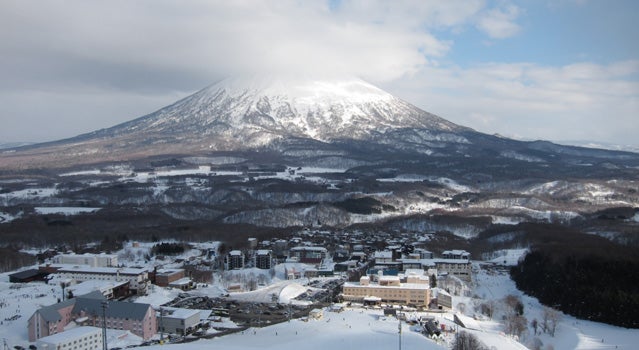
Between December and February, eight out of every 10 days, snow falls on the volcanic peaks of Japan's northern island. The snow is so light, deep, and falls so frequently, that chest-deep powder days are common. And nights. Many Japanese resorts, including , Hokkaido's snowiest, light their slopes all the way to the summit and run their chairlifts 'til nine at night. “It's surreal getting face shots in the dark,” says 's Anthony Trovatello. “And something every rider needs to experience.” What else sets it apart? Apres soaks in the onsen, natural hot springs, which abound in the region, and contrary to expectation, reasonably priced lift tickets. Most day-passes cost around $40. Book a rental apartment through Skijapan.com in Hirafu, at the foot of NisekoÔÇöhotels there are mostly 80s-style Japanese pensions with tiny, Spartan rooms. Feast on simple izakaya fareÔÇöbar snacks like edamame, fried chicken bites, and sashimiÔÇöin Hirafu's funky bar scene, where quaint 30-person establishments are the norm. After a few days, make the 40-minute drive to , a tiny, steep mountain that rarely sees a lift line. Round off your week with a backcountry ascent of Mt. Yotei, the conical volcano across from Niseko, and make kilometer-long, untracked laps inside the crater.
Learn to Judge Something Other than Wine
Take a trip and learn

Our choice: whiskey, which has a taste profile unparalleled by any other spirit, and in a stainless steel flask, travels beautifully in the backcountry. 1) Learn to distinguish varieties like bourbon, Scotch, Canadian whiskey, and single malt. 2) Describe, in this order: color, aroma, mouth-feel, flavor, finish. 3) Trust your own judgment. 4) Pass that flask around.
Not enough for you? Take a .
Ski a 14er
Chris Davenport, who has skied from the summit of all 53 of ColoradoÔÇÖs 14ers, tells you how to notch your first
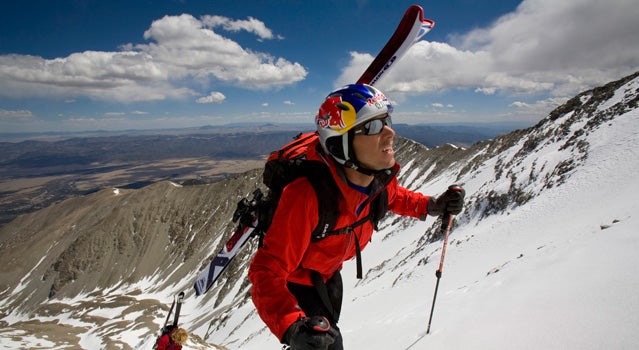
The estimates that between 800,000 and a million people climb Colorado 14ers every summer, but if you go when they're still snow-covered, you'll likely have the mountain to yourself. Plus, the descent is much quicker and easier on the body. You'll need backcountry gear, like a beacon, a shovel, and a probeÔÇöand the skills to use them properly. You'll also want a good partnerÔÇöideally one who has been on the peak before. A good route to start with is the east face of 14,265-foot Mt. Quandry in the Ten Mile range near Breckenridge. Go in April or May when the snow has had enough time to accumulateÔÇömany 14ers get pretty wind-scoured in the winter. Park at the Monte Cristo Trailhead at 10,900 and head north through the trees for 15 minutes to the east ridge. Once at tree line, the entire route will be visible to the summit. Start earlyÔÇöyou don't want to be on the slope too late in the day when wet snow avalanches can be a problem. I like to catch sunrise on the route and then hang out at the summit and wait for the snow to soften up to the perfect carveable consistency. There are great views of peaks from the front range all the way to Aspen. Check online forums like ╠řfor recent trip reportsÔÇöpeople will post reports in incredible detail, including what time the snow turned to perfect corn. Ride the obvious bowl from the summit. If in doubt, follow your ascent line along the ridge.
ÔÇöChris Davenport
Climb Mount Rainier
Learn alpine skills and climb one of North AmericaÔÇÖs classic routes, in less than a week
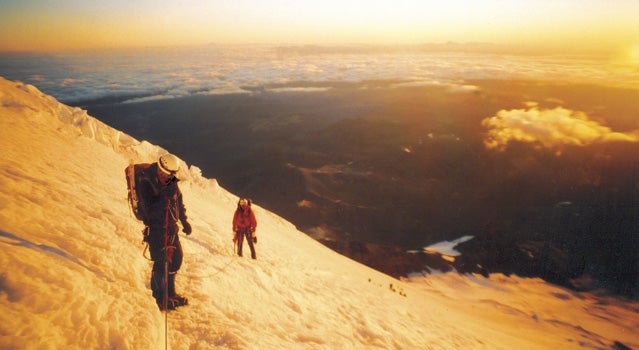
Want to tackle Mount McKinley? First, take on 14,411-foot Rainier. Same goes for Everest. The Washington peak is high enough, and fraught with enough yawning crevasses, to give budding mountaineers a taste of the physical effort and technical ropework it takes to handle bigger Alaskan and Himalayan summits. Not that Climbing Rainier isn't a fantastic experience in it's own rightÔÇöon your summit day you'll rise in the wee hours, hopefully reaching the top as the alpenglow christens first your Rainier, and then the lower acolytes of Baker, Adams, St. Helen's, and Hood arrayed along the forested spine of the Cascades. To climb Rainier you should have experience with self-arrest techniques and traveling on a rope team. can teach you all that, and lead you up and down the mountain on their four-day Summit Climb courses ($970).
Complete an Ironman
Start small and ramp up your training to take on the ultimate multisport race
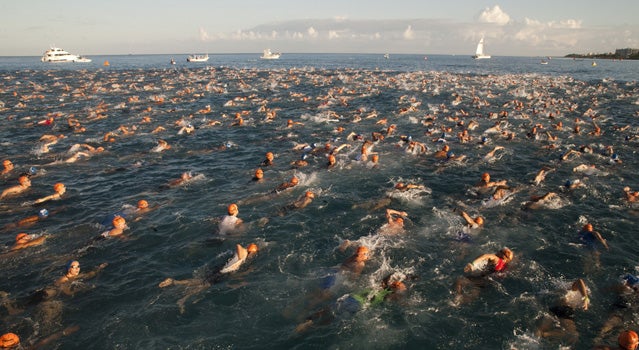
Need a reason to complete an Ironman? How about this: you'll have to eat like you did as a skinny teenager just to survive the training. If so inclined, it's actually possible to tick the 2.4-mile swim, 112-mile ride, and full marathon race off your list after just a year of training, says renowned triathlon coach Matt Dixon, founder of . The key: using shorter-distance triathlons like sprint triathlons (500-meter swim, 20-km bike, 5-km run) and half-Ironmans (1.2-mile swim, 56-mile ride, 13.1-mile run) as part of your training regime. “Triathlons are not swim, then bike, then runÔÇöthey're swim, bike, run,” says Dixon. “Completing all three disciplines successively is a skill and you have to practice it.” The skill comes in learning how to be efficient in the transitions, of course, but more overlooked are the nutritional aspects of getting enough calories into your system before and during the 140-mile race just to survive it. “Nutrition is the fourth discipline,” says Dixon. “What works for a neighbor might be very different than what works for you. Some foods or gels might not sit well on your stomach or give you gastrointestinal issues and the only way to find out is by trying them out in races.” Dixon suggests tackling your first sprint triathlon after three months of training, during which time you should be focused more on swimming and a little less on running, which is more taxing on the body. Schedule your first half-Ironman six months before your full Ironman race, and make sure to have fun. Complete a second half-Ironman three months later, this time focusing on improving your performance. In between, mix in other sprint-triathlons, a 10k, or some half-marathons. Just don't compete in a full marathon, says Dixon, which requires too much recovery time to be useful. Lastly, schedule a final sprint triathlon three weeks before the big race, and feel free to go all out. “If you finish feeling strong, you are ready to go,” says Dixon.
To get ready for your first sprint triathlon, use Dixon's three month interactive training plan.
Shred a Halfpipe with Style
Spend eight days in a huckerÔÇÖs paradise
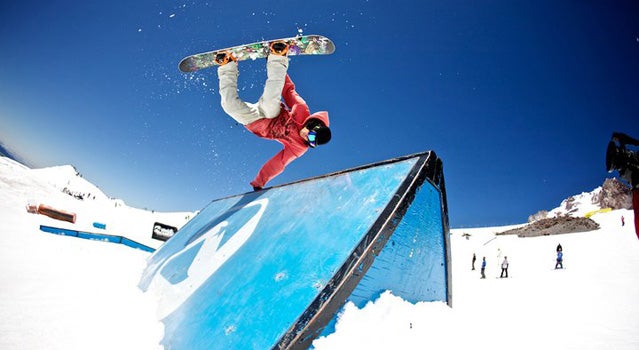
You're never gonna, uh, grow up to be Shaun White, but you can get the same freestyle snowboard instruction he did at Oregon's eight-day Adult Camps, held all summer long on Mount Hood's Palmer Glacier. Most participants say they learn more in a week on the hill at Windells than they can floundering in the terrain park all season. Though the air on the glacier will be thick with grommets launching off the camp's mile-and-a-half of jumps, table-tops, and halfpipes, each session of 22 adults gets its own pro coaches at a 7-to-1 ratio. Adults also bunk down in a separate house equipped with a flat screen, hot tub, pool table, and a fridge for adult beverages. Evenings, feel free to mow down teen campers in a paintball game, or once it's lights out for the kiddos, you'll have Windells' famous 12,000-square foot indoor parkÔÇöincluding skate ramps, foam pit and training trampolinesÔÇöall to yourself. BYO ibuprofen ($1,769).
Float the Grand Canyon in a Dory
Do it the old-fashioned way
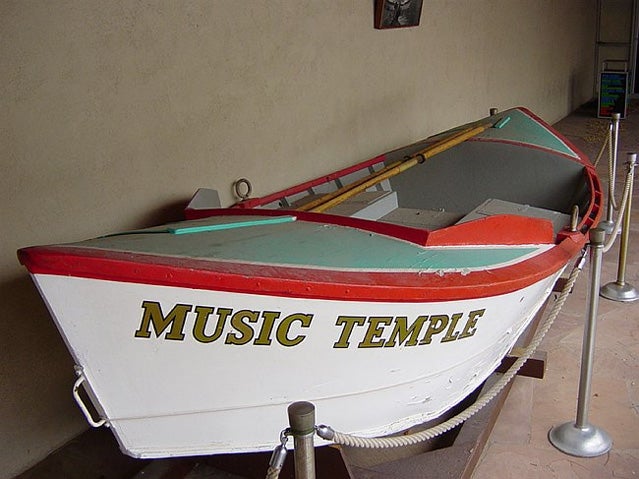
The wooden crafts John Wesley Powell took down the Colorado River 143 years ago are still the best way to run the rapids todayÔÇöpoetry to a rubber raftÔÇÖs prose. Rafts bash through waves; wooden dories dance over them. Rafts slump downstream; dories hesitate effortlessly in the current before slicing between mid-river shoals. Sure, dories do flip more oftenÔÇöbut I like to think that risk sharpens the experience. And because pretty much every Grand guide would rather row a dory down the CanyonÔÇÖs 277 rollicking miles, their pilots are usually the most experienced on the river. Premiere outfit ÔÇÖ guides average 20 seasons apieceÔÇöexperience that will enrich your 18-day trip in the form of stories, knowledge and yes, jokes. The other advantage to a wooden boat in the Grand Canyon? They travel faster downstream, leaving you more time for side hikes, or just relaxing with a book on the beach at camp ($5515).
Trek the Himalayas
Spend a month hiking through areas recently opened up to Westerners
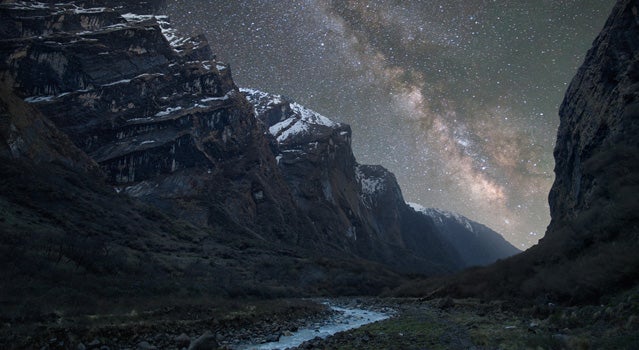
The highest mountain range in the world? Yep, it's on the list. The majority of trekkers to Nepal end up hiking up the Khumbu valley to Everest Base camp, but that's so 2010. Instead, head off the teahouse trail and explore regions few trekkers ever see. In September, makes a 27-day tour to the Tibetan Buddhist villages of Naar and Phu, just opened to westerners in the last decade (from $3615). You'll spend the first five days on the Annapurna Circuit and then head north towards the Tibetan border, where you'll encounter villagers spinning their yak and sheep wool and pounding mustard seeds into a paste for oil. Or join Mountain Madness's November 16-day trek to the Tsum Valley, opened just three years ago, where villagers lead their pony trains into Tibet to trade rice, fruit, and vegetables for yak meat and milk ($4,900). The company brings a Tibetan lamaÔÇöor priestÔÇöalong on the trip to help you learn about local traditions.
Ride a Bobsled
No spandex required
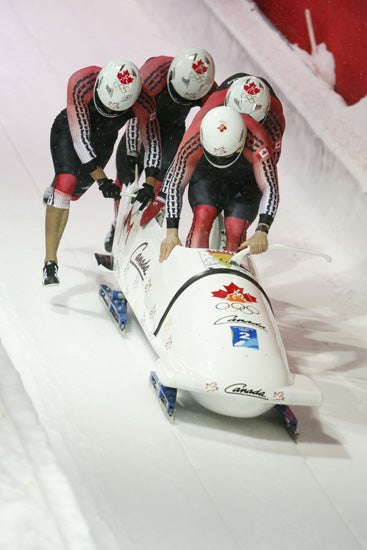
Never mind the thick hammies, tree-trunk necks, and chiseled spandexed flanks of those runners on TV pushing the sleds onto the track, to ($200/person)╠řat the in Park City all that's needed is the ability to sit. Dismiss the pre-run warningsÔÇöpeople with back or neck problems should not go down; pregnant women, or women who think they're pregnant, should not ride; shoulders should be tucked into your neck to prevent your head from knocking willy nilly against the craft; your head should be kept up in the turn, because if it goes down it won't come back up; if you flip, for God's sake, cram your head inside the sledÔÇöit's time to concentrate on the fun. The fun includes racing down the course at up to 80 miles per hour through 15 spine-compressing turnsÔÇöcourtesy of five times the force of gravity bearing down on your body. Our advice, ride in back for the most mind-beating, white-knuckled, lumbar-grinding experience. Thank the pilot at the finish. He or she may be an Olympian, and more impressively, might guide more than five sleds down a day. Then head to the for a the Whiskey Cider Braised Short Rib and a rendezvous ryeÔÇöbetter yet, make it a double.
ÔÇöJoe Spring
Sail the Turkish Coast on a Gulet
Hike, explore, swim, and leave the dirty work to the crew
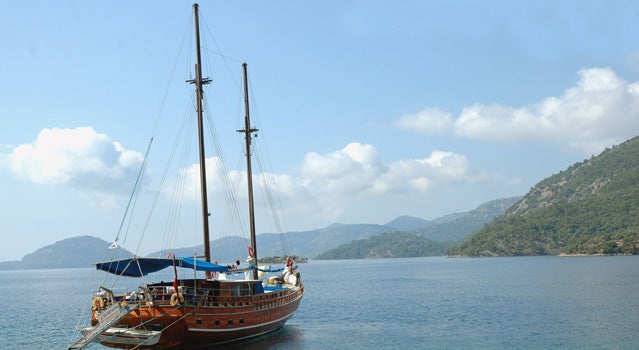
Turkey's Mediterranean coast is littered with archeological sites, many of which are accessible only by coastal trails. Charter one of Turkey's iconic gulletsÔÇötwin-masted, 100-foot wooden sailboatsÔÇöand hop from site to site, anchoring nights in deserted coves and diving overboard to cool off after the rugged hikes. Show up in the coastal town of Antalya in September, after most European tourists have gone home because of the cooling temps, and with some bargaining you should be able to hire an entire 4-cabin gulet for $400/day including a captain, cook, and crewmember. Sleep on deck and then spend the morning hiking to sites like Simena, a crusader castle and then spend the afternoon sailing to the next azure cove. Be sure to snorkel the 2,400-year old sunken city of Aperlea, which probably subsided in an earthquakeÔÇömarble buildings still contain terracotta floor tiles. For their 10-day charters, carefully vets charter boats for luxury and quality of the crewÔÇöincluding experts in archeology (starting at $6,410/person).
Ski the Southern Hemisphere
Join the pros for a week-long big mountain camp
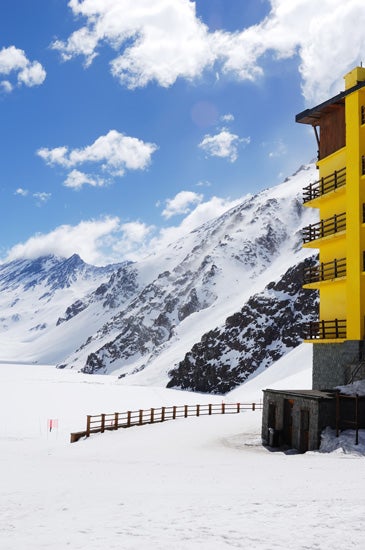
Keep it simple and head to Portillo, Chile, where only week-long all-inclusive packages are offered and the terrain is good enough for the US Ski Team's summer training. Perched at 7,250 feet a two-hour drive into the Andes from Santiago, Portillo consists of just three buildings, 14 lifts, and 14,000 acres of above-treeline slopes and knee-buckling couloirs. “It's a cruise ship for skiers, in a good way,” says , who hosts an annual big mountain ski camp ($2,150) in Portillo each August. “Everything's includedÔÇölift tickets, lodging, four meals a day. All you have to do is ski. There are only 450 beds in the valley, so over the course of the week, you're bound to meet everyone. It's the most social in the world.” The upper deck crowd should stay at the famous blue and yellow Hotel Portillo, which costs around four grand a person for the week. Dirtbags can live it up in the dorm-style Inca's for as little as $800. You'll still enjoy the same hot-tub views, late night disco beats, and radical skiing. Davenport's favorite is the 5,000-foot Super C Couloir. From the top, there's a spectacular view of 22,841-foot AconcaguaÔÇöthe highest peak in the Western Hemisphere.
Bike, Eat, Drink Your Way Through Tuscany
Gluttony in the name of cycling is not a sin

What better way to prepare yourself for a daily menu of cappuccino, bruschetta, risotto, and ChiantiÔÇölots of ChiantiÔÇöthan hammering 27 miles on a road bike? Tuscan roads are some of the best for cycling: narrow and windy, with frequent gradual ascents and descents, and they rarely see freezing weather so the surfaces stay smooth. Best of all, Italians love cycling the way Canadians love hockey, so they give a wide berth and even shout encouragement from the windows of their tiny Fiats. Sign up for ($2,495) and they'll set you up on a carbon fiber road bike for six days of rolling past lines of cypress trees, through olive groves and vineyards. While you are feasting on white truffle and porchetta, they'll move your luggage from one ancient walled hilltop city to another.
Learn Your Knots
Master the bowline
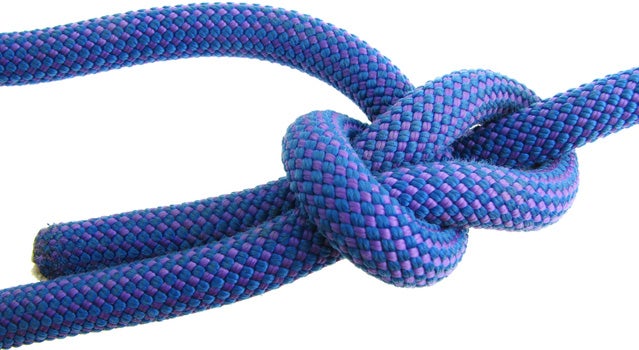
If someone asks you to tie up their boat, horse, or a rescue rope to a tree, you can luck into a solution. Follow the maxim: “if you don't know a knot, tie a lot,” meaning weave a clump of smaller knots and it'll probably hold. It might be impossible to untie, howeverÔÇöuse a couple of half hitches to haul a car out of a snowbank and it'll bind so tight you'll have to cut the rope. Don't want to look like a rook? Learn the bowline.
The bowline forms a fixed loop at the end of a rope, great for affixing a line to a sailÔÇöits original useÔÇöor for making a loop around a person to haul him to safety. The beauty of the knot is that it tightens under pressure, like when a horse pulls against it, but is still easy to untie afterwards. The thing about the bowline: it takes practice. Click on the video icon above to learn how to tie the knot. After you master it, the figure eight, clove hitch, and square knot will all seem easy, which is good because you really should know them, too.
Beach Hop Brazil
Play in the Atlantic by day, and get in some serious samba at night
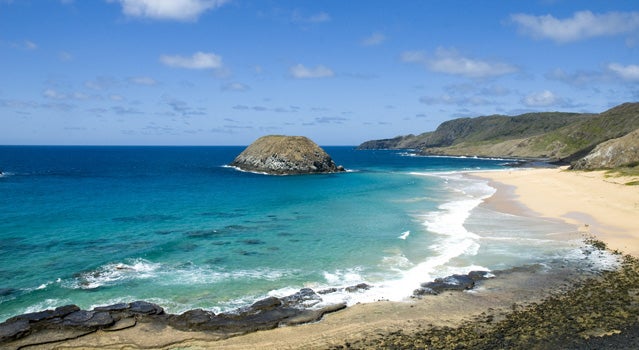
The northeastern Brazilian state of Bahia boasts 685 miles of coastline and is the heart of Afro-Brazilian culture. On crowd-free beaches from Natal to Maceio, swim, snorkel, or insinuate yourself into beach soccer games by day, and by night enjoy demonstrations of the region's famous hybrid creationsÔÇösamba and the martial art capoeira. Start at local's favorite Busca Vida in the 16th century city of Salvador. For a little action, head to the surf town of Itacare. For seclusion, and Brazil's best diving, head to the Fernando de Noronha Archipelago, a little-known marine sanctuary 200 miles offshore.
Climb Kilimanjaro and See the Big Five
Go now
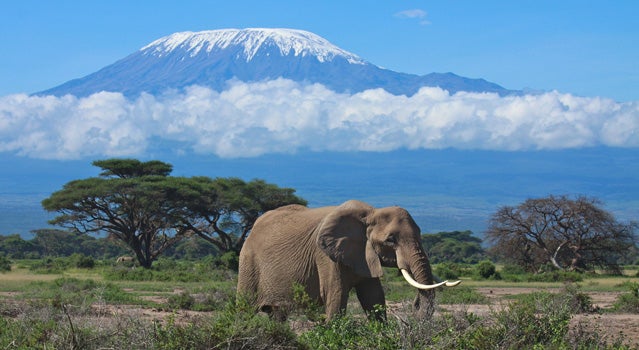
There's an urgency to climbing KilimanjaroÔÇöthe famous “tropical ice” that covers the 19,341-foot Tanzanian peak has melted to 15 percent of its 1912 size, diminishing your chances to chip glacial ice for your sundowner gin and tonic after the summit push. Cheekiness aside, Africa is a place of great flux, with precious animal populations shrinking faster than high altitude glaciers. Make sure to see them both by combining a summit bid on Tanzania with a safari to see the continent's Big FiveÔÇölions, elephants, cape buffalo, rhino, and leopard. Try 's new trip up the southern flank's Umbwe route. It's a far steeper approach than the standardÔÇöand crowdedÔÇöMishame route, but your group should have a campsite to itself. Combine a November ascent with a four-day safari to witness the great wildebeest migration on the Serengeti, one of Earth's wildest spectacles ($7,924).
Learn the J-stroke
The requisite practice is a great excuse to stay on the water longer
Switching sides every other stroke is an incredibly inefficient way to make a canoe go straight. It also makes you look like a ninny. The J-stroke will correct the boat's natural tendency to veer away from the stern paddler's stroke side without sacrificing much power. Here's a good video on how it's done, but be warnedÔÇöit takes practice.
Canoe the Boundary Waters
Just the right amount of space for perfecting the J-stroke
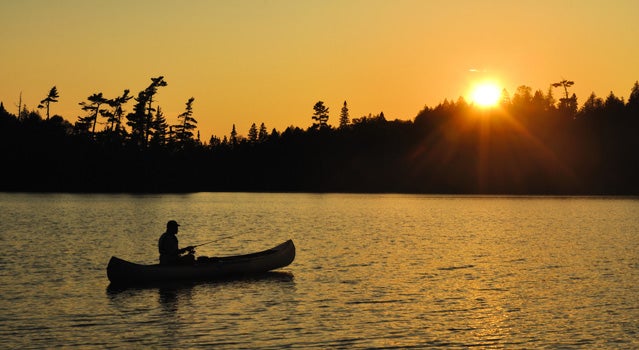
Practice that fancy new J-stroke in Minnesota's 1.1 million acre . With more than 1,200 miles of canoeable waterways you're likely to have at least a few of the lakes to yourselfÔÇöaside from the moose, black bears, beavers, and history. The Boundary Waters have been traversed by canoeists for centuries. Want proof? Check out the red-ochre pictographs of canoeists painted on the cliff overhanging the water on the southeastern end of Crooked Lake. They may be as old as 1,000 years. Tie Crooked Lake into a 50-mile, week-long tour by starting at Moose River North and traversing the Canadian border in Iron Lake and Crooked. Pick up maps and rent a 17-foot Kevlar canoe from in Ely ($17). “Any length of time in the boundary Waters is great,” says Wilderness Outfitters' Zach Imes, “but a week gives you time to get into the rhythm of canoe travel.”
Bike a 24-hour Race
Meet the healthiest groupies on the planet
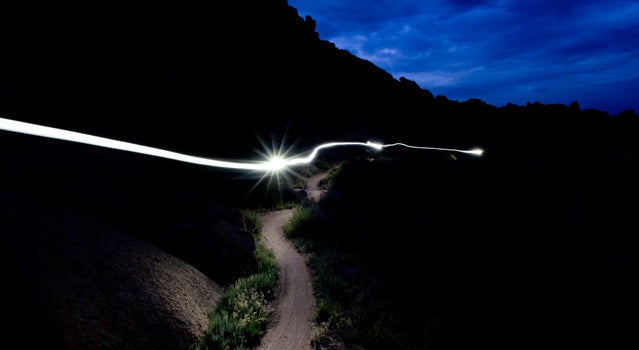
Except for the few whackos who enter 24-hour races solo, the events are fraught with camaraderie. “There's a real kid-like feeling of stealing experience with your friends when you are up all night at a 24-hour race,” says veteran 24-hour racer Dave Weins. “You really get to know people.” For that reason, and because it's insanely hard to ride a mountain bike in technical terrain in the middle of the night, you should join a team for your first race. Weins helps organize Gunnison, Colorado's , a low-key event that's ideal for 24-hour race newbies. The race is staged from the Gunnison KOA, whose grassy patches, hot showers and firepits make staying up all night easy and fun. The race is small at 250 riders, and the crowd is pretty congenialÔÇöoften not the case at bigger races like Moab. “There are always welcoming groups clustered around campfires,” says Weins. “There's a real sense that everyone is in it together.” As for the racing, the 13-mile course is fast, flowy singletrack on grippy decomposed granite that drains well if it does rain and isn't too technicalÔÇöperfect for surviving that surreal 3 A.M. leg.
Stay Alive in Avalanche Country
Take a class
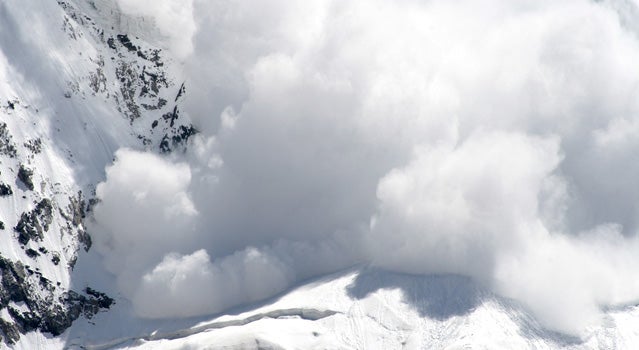
Wearing a fancy new airbag backpack isn't going to guarantee your safety in avalanche terrain. A better bet is to understand the conditions that cause avalanches, and for that you should take a course. The three-day Level 1 Avalanche course ($274) teaches students to mind the red flagsÔÇöheavy snowfall, collapsing or cracking snowpack, visible avalanche activityÔÇöand to recognize safe and unsafe terrain accordingly. Sometimes the most important red flag is the group itself, according to AAI's Sarah Carpenter. “If you've got a group that's tired and hungry, that's just as much of a red flag as a foot of snow in 24 hours,” says Carpenter. That group might take a shortcut through avalanche prone terrain just to get home sooner, and end up getting buried. The course begins in the classroom and then moves to the field for practice with transceivers and organizing rescues. The second and third days are spent in the field recognizing avalanche terrain and digging pits in the snow to analyze the snowpack. AAI's courses are held only in Jackson Hole, Bozeman, and Salt Lake, so combine one with a ski vacation. Your buddies, even the tired and hungry ones, will thank you.
Catch a Trout on a Homemade Fly
Tie your own

Some refer to fly tying as arts and crafts for grown men, but according to Squaw Valley, California fishing guide , knowing how to tie flies makes for better fishermen. “If you know the bugs, you are going to know the fish,” he says. “There are four stages of the blue wing gull,” he says, referring to an insect popular with wild Tahoe-area brown and rainbow trout, “and if you know how to tie each stageÔÇönymph, emerger, dun, and spinnerÔÇöthen you are way ahead of the game.” Studying the insect, you'll understand how the fish preys upon it. From May through October, Heron combines fly tying classes with guided fishing on the rivers near Lake TahoeÔÇöknown for monster trout 14 to 21 inches long. They got that way by being picky, but with Heron guiding your movements, you should be able to land one of the leviathans on a fly you hand-tied that morning.
Go Razor Clamming
Just not with your grandfatherÔÇÖs foraging technique
The three-to-five-inch long Razor Clam is abundant at the tide line on beaches from Alaska to Oregon. Because they can dig downwards so quickly, they offer the most sport of any bivalve. People still use clamming shovels, but more fun is the clam gun, a $20 aluminum or PVC tube that captures clams with suction (play video above).
Go in spring or fall when agencies open the weekend-long seasons and join the Easter-egg-hunt-like festivities. 1) Locate the clam showÔÇöthe hole left in the sand when the clam withdraws its neck from the surface. 2) Place the clam gun around the showÔÇöoff center toward the ocean. They tend to burrow in that direction. 3) Drive the gun straight downwards with a twisting motion. 3) Cover the air vent with your thumb to create suction and lift the column of sand out of the hole. 4) Shake the sand, and hopefully your razor clam from the tube. 5) Best served battered and flash fried, or in chowder.
Surf Costa Rica
Hit a remote break
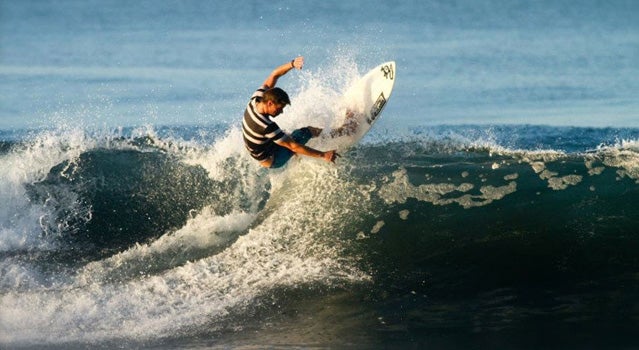
Costa Rican surf is hardly a secret, which is why new camp in Nosara, on the remote Nicoya Peninsula is your best bet for empty lineups. The luxury surf school was located there for the consistent year-round waves and the four-miles of undeveloped beach out the front door. The school offers all-inclusive week long instructional camps complete with a three-to-one instructor ratio, video-instruction, yoga classes, and a freshwater swimming poolÔÇöperfect for lounging around and sipping guaro (from $2750).
Take a Nap in an Alpine Meadow
Understand afternoon delight
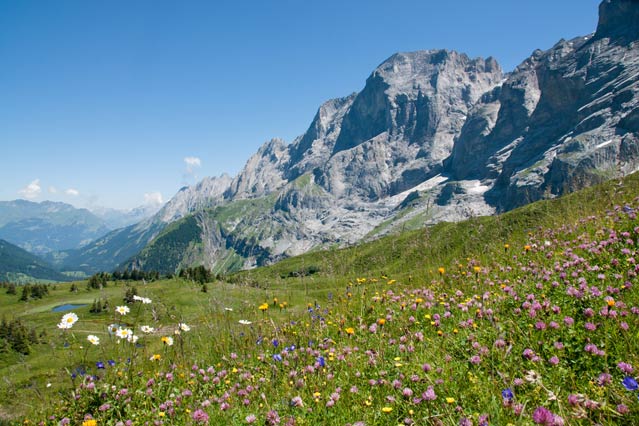
You and your gal are climbing the peak and partway up you spot a sunny meadow of lupine and a few fat bees buzzing around and you tug her down into the grass because what the hell is so important about climbing a big pile of rocks anyhow?
Read Right
Might we suggest Cormac McCarthyÔÇÖs ?
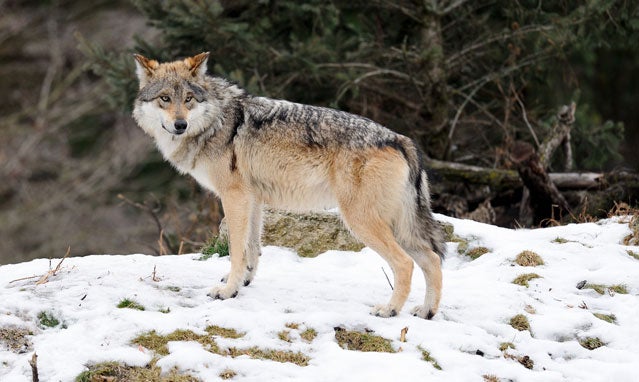
A sixteen-year-old boy traps a pregnant wolf in 1930s New Mexico and decides, with mythical gravity, to return her to the Mexican wilderness. As is the norm in Cormac McCarthy's universe, it does not go well, but because the tragic relationship unfurls with such hypnotic beauty, we are compelled to read on even in the face of hopelessness. It is a valuable analogy to those of us who feel the pull to do right by wilderness, and as with all good writing, the expert observation inspires us to observe better on our own journeys, and therefore live more consciously.
Hunt a Wild Hog
Head to the Land of Enchantment, with a gun
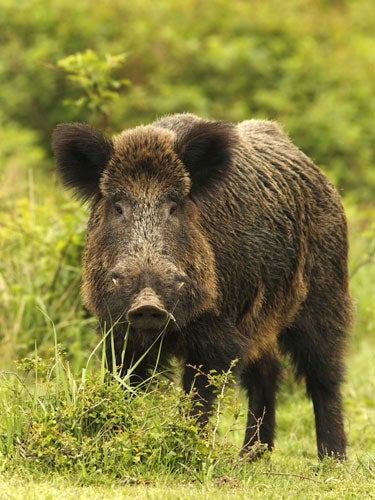
Hunters in Texas call it the poor-man's grizzly for a reason. A 250-pound razorback will charge with little warning, and needs just seconds to shred human calves into matching tassles. Kill one, and you'll find yourself with 80 pounds of good eatin'ÔÇönice, lean pork, best mixed with venison and made into brats for an authentic southern cook-out. But if anyone asks, that's not why you're out hunting. It's for the environment. These vacuum up vegetation, small mammals, and ground-nesting birds, then wallow in the destruction, leaving pockmarked earth in their wake. Because they're nomadic and nocturnal, it's hard to determine just how many feral pigs there are in the U.S., but in Texas alone, an estimated population of 2.6 million wreaks $52 million in agricultural damage annually. That's the bad news.
The good news is that in most southern states there are few or no restrictions on hunting the beasts. There's no bag limit, no season, and in New Mexico, you don't even need a hunting license. That's the first reason to head to the 47th state in our union. The second reason is Richard Burton, a New Mexico state wildlife specialist. Call and he'll go off on the best locations for hunting, and maybe even contact a few private land-holders for you.
To do it right: Burton says head to the higher elevations in the Capitan Mountains and look for hogs on East-facing mountain slopes in the early morning or late afternoon, when they're most active. Drive in on the BLM road until you see the signs: pinyon pines tilled at the base, smashed underbrush, and muddy rubs around wallows. Since hogs don't sweat, they have to have water nearby, so follow rivers and check around pools. Bring a good skinning knife, thick clothes for tramping through undergrowth, a hog-caller, and dogs. You'll also need at least a 30-calibre. If this is your first time, visit the guys at for tipsÔÇöunless you're OK with getting treed.
ÔÇöCaty Enders
Become a Backcountry Gourmand
Forget the gorp
If you wouldn't eat it at home, why eat it in the backcountry? That's the principle Laurie Ann March, author of , bases her recipes upon. This one requires a dehydrator.
Dehydrated Moroccan Chicken with Sweet Potatoes
Dehydration Time: 7-10 hours
Makes 4-6 servings
One of my first wilderness cooking students lived in Morocco part of her life and shared some interesting stories with me. Her experiences inspired this dish.
- 1 tablespoon olive oil
- 3 boneless, skinless chicken breasts
- 1 medium sweet potato
- 1 small onion
- 1 large carrot
- 1 1/4 cups chicken stock
- 3 fresh plum tomatoes
- 1 small yellow zucchini
- 1 small green zucchini
- 6 dried apricots
- 1 inch fresh ginger root
- 1 cup canned chickpeas
- 2 tablespoons lemon juice
- 1 tablespoon honey
- 1/8 teaspoon cayenne pepper
- 5 saffron threads
- 1/4 teaspoon cinnamon
- 1/4 teaspoon cumin
- 1/4 teaspoon turmeric
- Salt and pepper to taste
At Home
Cut the chicken into small chunks. Dice sweet potatoes, mince the onion, and chop the carrots. Put the olive oil in a heavy pot on medium heat. Brown chicken chunks then add the sweet potato, onion, and carrot. Then pour in the chicken stock to cover. Let simmer for 30 minutes.
While that is simmering, chop the tomatoes, zucchini, and apricots. Grate the ginger. Drain and rinse the chickpeas. Add all these ingredients, as well as the lemon juice, honey, and seasoning. Let simmer for another 30 minutes. Remove the meal from heat and let cool.
Measure what you will dry and write this measurement on a sticky note. Place the food on lined dehydrator trays and dry for 7 to 10 hours. Put the dried ingredients and the note in a ziplock freezer bag.
At Camp
Add enough boiling water to the chicken mixture in a pot to equal the measurement on your sticky note. Be sure to account for and add your dried ingredients to the rehydration container prior to adding the water. You can always add more water if you need to. Let the pot sit for at least an hour or until fully hydrated, then reheat. Serve with French bread or pitas.
Tip
If the chicken doesn't rehydrate completely soaking in boiling water, simmer it over medium heat for a few minutes before serving. Vegetarian option: substitute vegetable stock for chicken and increase vegetables by 1 1/2 cups or add 3/4 cup TVP.
Learn a New Sport at 40
Get some air
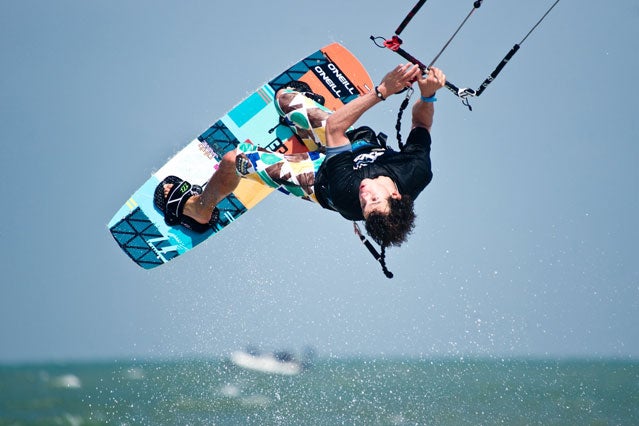
There's evidence that learning new physical activities can stave off the effects of mental deterioration as you age. Our pick for the far side of 40: kiteboarding. In no other sport can you gain superhuman aerial capabilitiesso quickly. “Because the wind is supplying the power, it takes less strength than you'd think,” says Paul Sheetz, an instructor at , on South Padre Island, Texas. “We have all agesÔÇöand shapes and sizes at in our lessons.” Why South Padre? There's almost always a steady, gentle breezeÔÇöas opposed to gusty conditions in places like or Oregon's . Even better, beginners learn in Laguna Madre Bay, just a few blocks from the shop, a one-million square acre lagoon that is never more than five feet deepÔÇömeaning when you wipe out, instead of treading water, you can simply stand up, which, says Sheetz, “is huge for beginners struggling to learn their water starts.” One million acres also means there's plenty of room to flounder without getting yelled at by experts. Air Padre offers three-day beginner camps for $999, featuring 12 hours of instruction at a 2-1 student to instructor ratio and all the gear, including helmets equipped with two-way radios for remote coaching.
Build a Treehouse for a Kid
Keep it simple and sound with some help from the experts
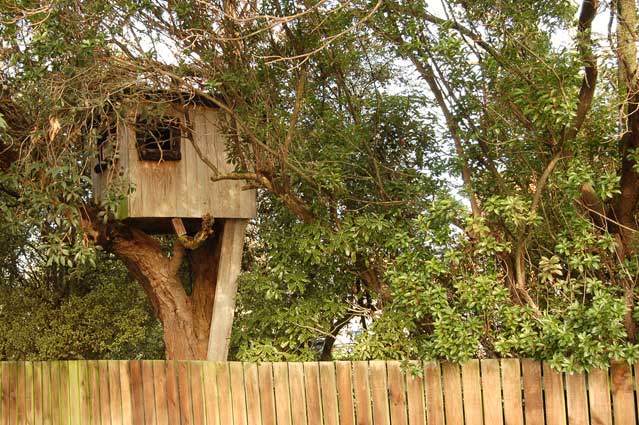
Every kid needs a hideout where there are no grownups allowed. Except maybe to check for structural soundness. “There's always a way to build a treehouse, even if there are no trees in the yard,” says Jeanie Stiles, author, along with her husband David, of . “We've built treehouses on top of fences.” Here are a few tips on designing your treehouse from the Stiles:
- It doesn't have to be really high. A six-foot tall treehouse can be just as much fun.
- Overlay a photo of the treehouse site with acetate and have your kid make design sketches of the treehouse. Have them make a list of features like a secret compartment or a fireman's pole.
- Realize that the tree is going to grow and allow it some room.
- Have a porch or other un-enclosed area. Kids love to be able to see the ground and shout down orders.
- You'll need a tree at least a foot in diameter to support the structure, or several trees at least eight inches in diameter.
- Don't forget to let your neighbors know what you are up to.
Surf the Maldives
Empty breaks and all the fixings
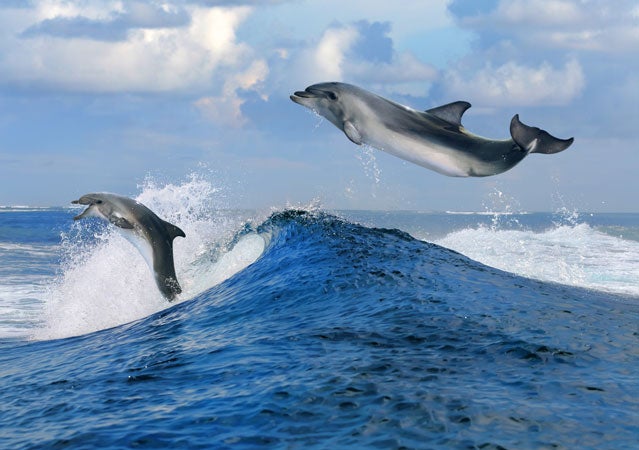
Only 250 of the Maldives' 1200 islands are inhabited, which means no one is going to be fighting you for the swell steaming up the Indian Ocean from Antarctica and peeling onto the archipelago's maze of reefs and point breaks, except for maybe a few dolphins. Especially not if you sign up for a week on 's 128-foot, triple-deck yacht, the . “Our goal is empty line ups,” says Tropicsurf's Jennifer Edwards. They ensure it by motoring through the night. “We can literally go to any break in the country overnight to maximize surf time by day,” says Edwards. “Then, at the break, our two guides and two high speed tenders can see to it that one group is surfing chest high longboard waves while five minutes away the others are pulling into 6 foot barrels.” The cruise originates from the , and is essentially an extension of the luxury hotel. It offers nine staterooms, a suite, hot tub, lounge, and restaurant staffed by Four Seasons chefs. If you get tired of paddling into empty waves, go scuba diving, stand-up paddleboarding, or get a massage ($9,800).
Camp on Your Own Island
Without paying a fortune
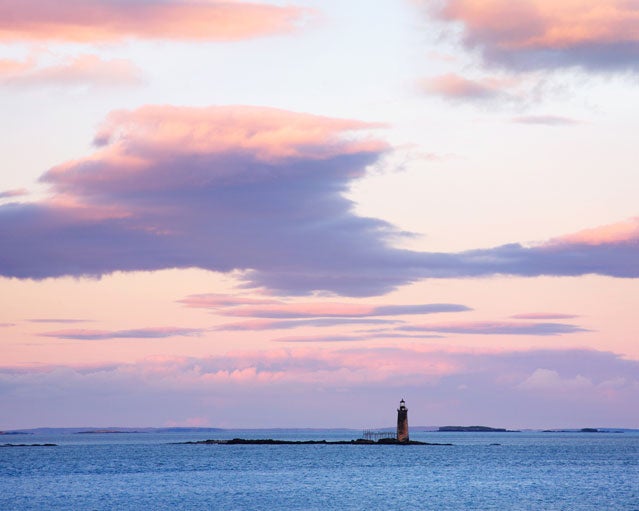
You don't have to go all the way to the Maldives to find a deserted island. Around 250 of Maine's 3,000 coastal islands are uninhabited and open to the public for camping. Check out 120-acre , part of the Calendar Islands (one for every day of the year) in Casco Bay, just northeast of Portland. “It's just enough of an effort to get to that you'll have it to yourself, even on weekends,” says Marc Bourgoin, owner of Portland's . Whaleboat has all the hallmarks of a classic Maine islandÔÇögranite outcrops and rocky beaches topped by spruce and maple, nesting bald eagles, and surrounded by waters filled with harbor seals and lobster pots. Pick up kayaks and charts from Lincoln ($125 for three days) and drive 20 minutes northeast to the launch on Meerpoint. From there paddle five miles south through Middle Bay, past Upper and Lower Goose Islands, and land on the rocky beach in Whaleboat's eastern cove to set up basecamp for a long-weekend of exploring. Paddle a mile southeast to the Admiral Perry museum on and then swing by Bailey Island to pick up live lobsters for dinner from the market. Go in August, and pick your own blueberries to sprinkle on your morning oatmeal.
Snorkel with Whale Sharks
Take the photo of a lifetime
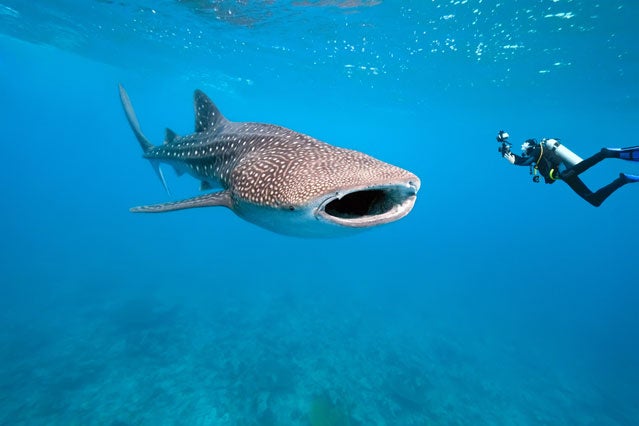
Whale sharks, the largest fish on earth, can grow as long as 45-feet. Plop into the water beside one of these slow-moving, polka-dotted, school bus-sized behemoths. No matter how many times you tell yourself they only eat plankton, it's still a thrill. Especially when they open their five-foot wide maw to suction in a cloud of krill. The Earth's biggest concentration of the rare fish occurs every May to September off Mexico's Isla Mujeres, a 20-minute ferry ride from Cancun. Each morning 10-passenger boats from carry snorkelers to sea in search of whale sharks ($125). The fishermen who run the outfit have arrived at their own code of conduct to limit impactÔÇöonly two swimmers are allowed in the water at a time and each boat spends a maximum of 30 minutes with any individual sharkÔÇöso you'll take shifts all morning slipping overboard to kick alongside the silent, gliding beasts. Bring a camera, take a picture, and upload it to the to help scientists track just how far these behemoths travel.
Run a Marathon
ItÔÇÖs not as hard as you think
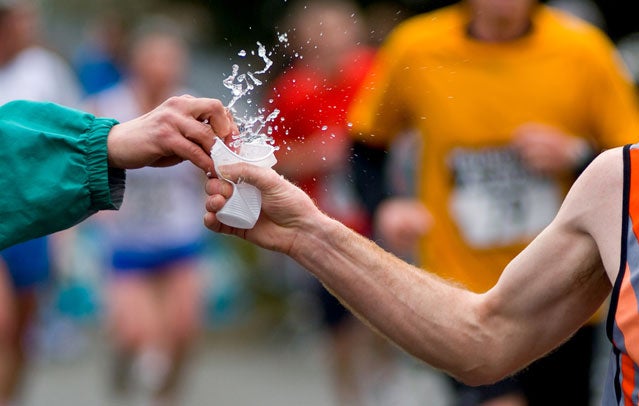
Watch a big marathon like (44,000 runners) and the thing that stands out is the diversity of age and body types parading byÔÇösome old, some big, and some just awkward. You'll probably leave thinking: “If they can do it…” And you'd be right. With the right training, almost anyone can complete a marathon. Our favorites are the festive , headlined by the June 3, , which features a live band at every mile marker. You are probably too late to prepare for that race (you'll want to train for about six months in case of an injury or illness), so pick one of the series' 28 other dates in North America and Europe. If you need some help getting started, check out coach Hal Higdon's , located in The ║┌┴¤│ď╣¤═° Fitness Center.
Heli-ski Valdez
With former US Ski Team member Dean Cummings
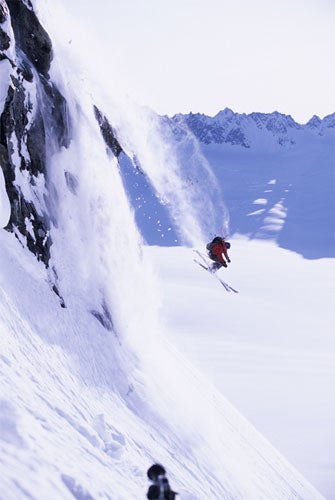
You may never ride more heroically than you can in Alaska's Chugach range. The reason is the snow. Sure, the pros you see in the movies are fantastically talented, but they, too, ride better in the Chugach than they do anywhere else. “There's no place in the world where you can slide your skis like in Valdez,” says , who has been skiing Valdez for decades, and now runs helicopter skiing operation there. “The maritime snow is so consistent and elastic that it sticks to 90-degree faces, which means you can ski fantastically steep stuff,” he says. It also offers a consistent and fluid resistance, so that even when you're riding at 90 miles an hour it “doesn't feel that fast.” (Yeah, to a former World Cup racer.) Lastly, because the maritime temperatures are consistent from the top of the run to the bottom, the snow is consistent, which means even 5,000-foot runs take less effort. “On the first day, people are overwhelmedÔÇöjust trying to piece together the scale,” says Cummings. “But they leave here looking at skiing differently. They are able to stand on top of a mountain like and see a whole different set of possibilities. It's like going from 2D to three dimensions.”
Learn to Save a Life in the Backcountry
Take a Wilderness First Responder course, but master these three skills now
If you spend a lot of time in the wilds, you should book an eight-day with NOLS ($650). In the meantime, according to Buck Tilton, author of , these are the three skills you need to learn now:
Basic Wound Care
- Apply direct pressure until bleeding stops.
- Clean the wound vigorously.
- If needed, close it up with .
- Monitor for infection.
Distinguish Serious Abdomen Pain from a Tummy Ache
- Evacuate if pain accompanies any of these:
- Pain has persisted for more than 12 hours
- If symptoms of shock are present
- Entire abdomen is rigid
- There are no gurgling sounds
- there is blood in the stool or vomit
- They have a temperature of 102 or higher
- The pain is very sharp in the right lower quadrant, where the appendix lies
- If vomiting and/or diarrhea has persisted for more than 24 hours
- If the patient could be pregnant
Splint an Injury
Stabilize the injury with padding and rigid elements (like sticks), including the joints above and below a bone, or the bones above and below a joint. Bandage tightly enough to immobilize, but not so tight as to cut off circulation, sensation, or motion.
Ride the Race Across America
Earn your psychedelic wings
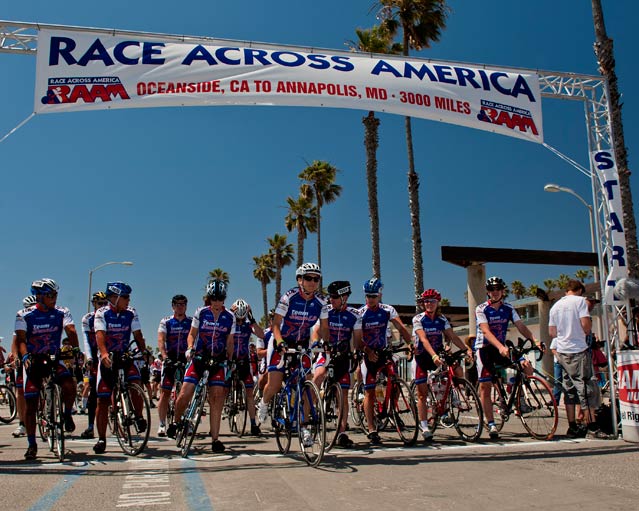
The hallucinationsÔÇömailboxes as people, elves in the cornrowsÔÇöusually kick in around Illinois. Amongst solo competitors, pretty much no one escapes them, and you won't either. In order to complete the 3,000-mile bicycle race from California to Maryland within the 12-day cut off, you have to ride a minimum of 250 miles a day. The winners average a superhuman╠ř 22 hours a day on the bike. Last year, 30 of the 41 solo racers finished. They aren't all elite athletes, eitherÔÇöthe race's oldest finisher was 62-year old (OK, he's a rocket scientist by trade). You'll need to train for about two years, complete a qualifying event (the shortest of which is a 375-mile race), and raise at least $20,000 to fund your support team. But if you want to find out what you can endure, there may be no more scenic way to do it than riding as fast as you can across the good ole US of A. Oh, by the way, there's no prize money.
Bike Across the United States
Your own way, at your own pace
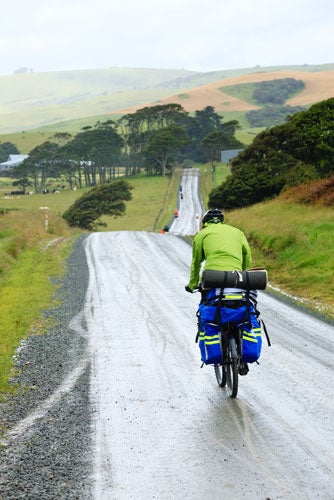
There's no better way to get a sense of the United States than to bike across it, which is exactly what I did the summer after my junior year of college, pedaling 3,600 miles from Seattle to Washington, D.C. in six weeks. I started in mid-June and finished in late July. I was with a group called Bike-Aid (now ), a fundraising effort created in 1986 by Harvard and Stanford students for the , an organization with projects in communities in need worldwide.
There were four Bike-Aid rides starting simultaneouslyÔÇöin Seattle; Portland, Oregon; San Francisco; and Los AngelesÔÇöfollowing different routes to Washington, D.C., where we'd all meet for the grand finale ride up to the United Nations in New York City. The goal was to raise money and awareness for ODN's development projects. I picked the Seattle ride because I hadn't been to many of the northernmost states and joined roughly 20 other people who ranged in age from 14 to 60-plus. We camped, slept on church floors, and worked in soup kitchens along the way. But mostly we biked, logging 100-plus miles many days, through some of the most stunning terrain in the U.S.ÔÇöthe Cascade Mountains; , Idaho, and its huge lake; the Northern Rockies; and Montana's wide-open spaces, where one cold night a local sheriff insisted on putting us up in his empty jailhouse. You'd be surprised how nice complete strangers are when you show up carrying your world on a bike.
While the West had the most dramatic scenery, I fell in love with the Midwest. Parts of Minnesota were having a mayfly invasion the summer we rode through, and the flies in some places were an inch thick on the roads. Cars slipped and skidded through them, as did our bikes, mayfly guts gathering in our tire tread and other less optimal places. Still the lakes, rolling hills, and vast farmland were inspiringly beautiful. I found the mountains on the East Coast harder to pedal up than the mountain ranges out West. Most of the western mountain passes we climbed were graded lower, so while they were long, they weren't outrageously steep. But those twisting roads up the Allegheny and Appalachian mountains took more of a bite out of my legs than any of the bugs back in Minnesota.
It's difficult to get in shape for long-distance biking unless you can ride all day, which not everyone can do. I trained for a couple of months, but it took the first two weeks of the trip to get my legs in all-day cycling shape. Some nights early on, my quads were so sore that if I moved in my sleep, the pain would wake me up. I was also burning hundreds of calories each day, shoveling in PB&J's and bananas by the dozensÔÇöand couldn't gain a pound for the life of me. By the end, we were knocking off 100-mile rides almost easily. I've never been so strong, or so happy.
To do it right, check out web sites like , , and╠ř╠řfor advice and inspiration, grab some friends, and go. Do it for the adventure or choose a cause to raise money for, asking friends and family for monetary pledges by the mile. Need more ideas? has a Sustainability Ride Across America slated for summer 2012, in which you'll visit farms and learn about food and permaculture. Or sign up for the American Lung Association's .
ÔÇöMary Turner
Traverse Via Ferrata in the Dolomites
Scamper up vertical terrain
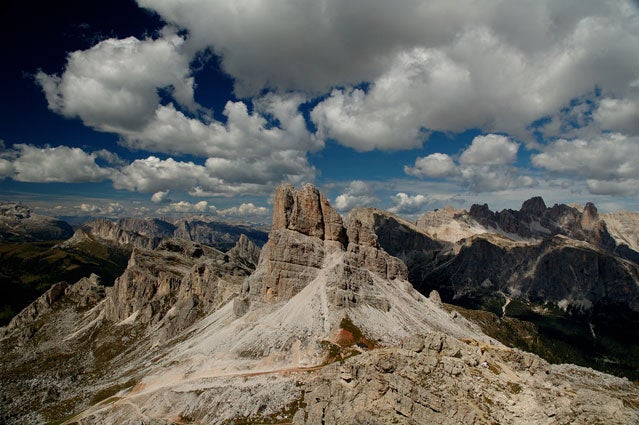
Italy's via ferrate (“iron paths”) were originally built by Italian soldiers as they fought the Austro-Hungarian armies during WWI. Iron cables, steps, and ladders traverse or ascend sheer rock faces, allowing those without rock climbing skills to quickly move through vertical terrain. And what terrain it is: the Italian Dolomites are clusters of fairytale spires and sheer walls thousands of feet high, all leaning over ribbons of green alpine meadows. Travel lightÔÇöfrom refugio to refugioÔÇöas you traverse one or more of dozens of improved via ferrate with guide service. Their cornerstone week-long Via Ferrate Traverse begins in Cortina d'Ampezzo, site of the 1956 Winter Olympics and tackles five different routes in the Dolomites, including a ttraverse of the Castelletto Tunnel, used by the Italian army in 1917 to blow up an Austrian position on the peak of the Castelletto di Tofana ($3200).
Go on a Walking Safari
Trek the wilds of Tsavo
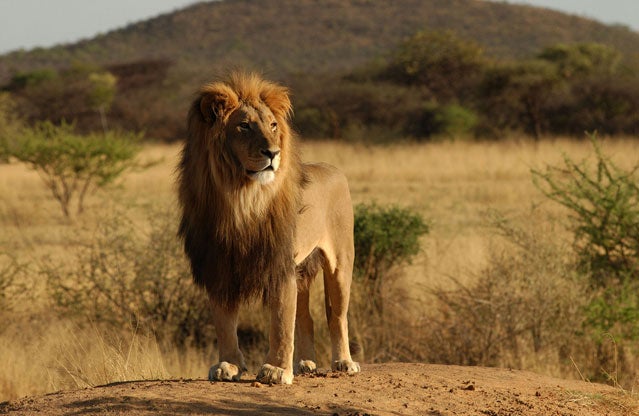
Inside an African safari vehicle you feel strangely invisible. Even if you're three meters away, the predator won't glance your way. Step outside the truck, however, and it's game on. Don't try it. There are, however, a few outfits that lead walking safaris where you can experience the adrenaline-soaked experience of standing a short sprint from lions, leopards, crocodiles, and elephants. Kenya's practically invented the category, and in the 34 years they've been guiding clients on foot through , they've never lost a guest. That's thanks to experienced guides carrying AK rifles like Samburu tribesman Mohammad Hamisi, who shot poachers in the 1980s alongside notorious Parks warden Richard Leakey. Tropical Ice's Elephant Walk traverses 60 miles of the Galana River, the region's only watering hole in the dry season, followed by vehicle-supported tent camping each night ($7995). You'll walk in the morning when temps are cooler and then seek out more animals by vehicle in the afternoon. The tour also includes three days of traditional safari at Kenya's .
Never Cross a Track
Helicopter in to a British Columbia backcountry ski lodge
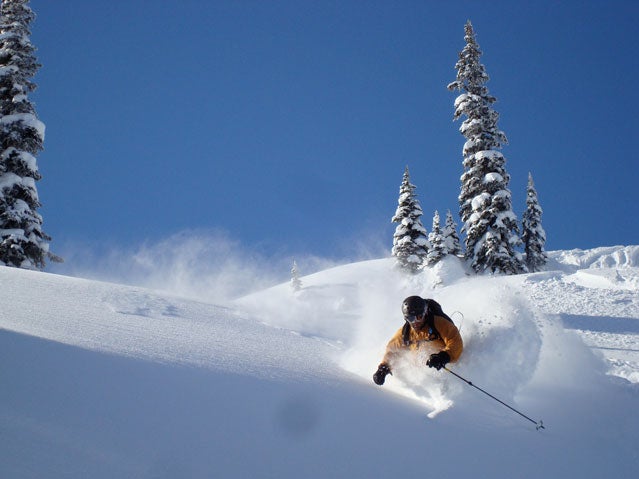
Ski fresh tracks every turn for a week from a mountain lodge where the only man-made structure in sight is the sauna. At one of British Columbia's 32 backcountry ski lodges, you don't have to pay helicopter skiing prices for untracked snow, but you will load into a chopper twiceÔÇöon the way in, and then a week later, on the flight out. In between, you earn your turns. Every blessed one of them. A lot of the lodges are a bit rustic (read: outhouses), but for less than you'd spend on a weekend of heli skiingÔÇö$1200 per personÔÇöyou can rent out Sol Mountain Touring's of a lodge for a week with 13 friends. is located 60 miles south of Revelstoke in the Monashee range. Each day, you'll step outside the front door, click into your touring skis, switch on your avalanche beacon and start skinning to the top of the shark's tooth ridge above the lodge. Or ski first and skin later on the 1200-foot run through the old growth stand below the lodge. Don't worry about repeating a runÔÇöyou can't possibly ski out the 47-square miles of terrain. For another grand apiece, they'll break trail and have apr├Ęs snacks, cocktails, and dinner waiting for you as you schush up to the lodge each day at dusk.
Backpack the John Muir Trail with The Mountains of California
Walk in the footsteps of a conservation giant

The is arguably the best backpacking trail in the world. Beginning in Yosemite Valley and ending 211 miles later on the summit of 14,495-foot Mount Whitney, the footpath also traverses high alpine sections of and . It skirts countless alpine lakes, naked granite domes, and thundering waterfalls. Most people tackle the trail in two weeks, which may be just enough time to knock out all 304 pages of John Muir's 1894 classic , a meditation on a quarter century worth of travels in the Sierra Nevada. No detail is too small for Muir, from an examination of sequoia bark to a chapter on the water ouzel, a tiny insect-eating bird, which doesn't sound exciting, but through the sheer force of his enthusiasm, it is. To wit, the book's most famous passage is a rhapsody on an evening spent swaying atop a 100-foot tall tree in the middle of a December storm. He communes with the other trees in the grove, “their lithe, brushy tops were rocking and swirling in wild ecstasy.” It gets way beyond tree-hugging.
Get Your Wheels off the Ground
We canÔÇÖt guarantee a safe landing
“Speed is your friend,” says pro mountain biker , 26, who has landed too many big jumps to count, including the ridiculous backflip above.
The key to riding such terrain in the first place is to keep your speed up so that the wheels can skip over obstacles. That, and Zink says you should believe in yourself. He also says you should keep your legs bent in an athletic position, keep your elbows up for better leverage on the handlebars and shock absorption, and keep your eyes focused several meters down the trailÔÇöso you don't fixate on the obstacles at your wheel and lose your flow. “Keep your weight back, but not so much that your front wheel doesn't do its jobÔÇömaybe 70 percent on the back wheel and 30 percent up front.” Off drops, Zink says, let the bike take the hit if at all possible. “The suspension, the tires, the wheels or other parts of the bike bendingÔÇöit all helps absorb the shock. Better to break the bike than any part of your body.” Got it? OK, you probably still want to start small and safe, like at , a famous bike park which offers 60 lift-accessed trails spread over 4,946 feet of the ski hill and includes jump and drop-off parks with features for every level. Take a two-hour Bike Park 101 lesson, which includes a lift ticket and a downhill rental bike ($109). Though you'll be on a supremely stable 50-pound bike with eight-inches of shock absorption, the skills you'll learn will transfer back to your cross-country set-up, says Whistler Blackcomb's head of instruction Tom Radke. You graduate to larger and larger drops, eventually following just a few wheel lengths from your instructor as you both launch the lips with the surprising speed you'll need to land themÔÇöjust like Cam.
Paddle the Length of Baja
Bring two books, and make one of them John SteinbeckÔÇÖs
Just divorced? Running from the law? Take some leisure time and paddle the 600 miles of Sea of Cortez coastline from San Felipe to La Paz, a two-month expedition that requires virtually no planning. Simply load your kayak onto your rig, buy Dave Eckardt's 2009 ╠ř▓╣▓ď╗ň drive to San Felipe. Store your wheels at the car park outside of town, buy a week's worth of groceries, and start paddling south with the prevailing winds. Deserted, campable beaches line the entire route, and towns where you can buy rice and fresh tortillas appear at least every 100 miles. You'll want to average 20 miles a day and carry about 10 gallons of water per person, which leaves plenty of room for rest days or getting beach-bound by the occasional gale-force Norte winds. Troll for fish as you go, which will leave more space in your hatches for fresh fruit and veggies (Eckardt's pick: cabbages, for fish tacos). Most people end their expedition in La Paz, as the remaining 150 miles to Cabo is less scenic and increased private land ownership is a challenge to camping.
Raft an Endangered River
Go before itÔÇÖs dammed
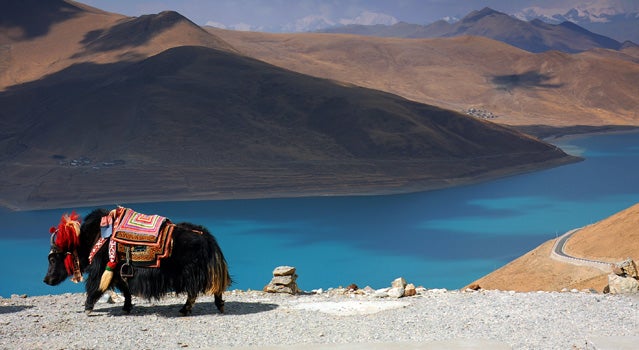
Since 2000, the Chinese have built more than 35 different 300-foot high dams in the canyons of western China and Tibet. Another 102 are proposed or underway. Travis and Pete Winn's expeditions is fighting the trend by taking a page out of 's 1950s strategy to save Colorado's Yampa River from inundationÔÇörafting influential people down the river. This September, join a handful of Chinese millionaires and luminaries on the 16-day second descent of Tibet's Nu Jiang. Five dams have been proposed on the 200-mile, Class III-IV stretch, and at least parts of the forested canyon are sure to be submerged within five years ($7000).
Get Your Hands Dirty
Volunteer on a trail
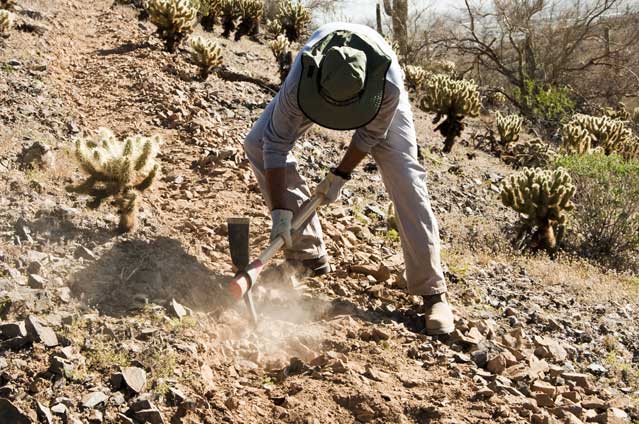
Wipeout on an untended waterbar and you'll never take a maintained singletrack trail for granted again. Last year, volunteers at the 's 500 local clubs and chapters built 250 miles of brand new trail, wielding shovels, Pulaski's, and come-alongs during single-day or weekend work parties across the country. Their sister organization, the , hosted 65 different week-long trail building volunteer vacations from Hawaii to Maine. Every trip, including one to the Virgin Islands, includes meals and costs just $245. If you've got the coin, check out 's Machu Picchu trip. Their volunteers spend a week shoring up centuries-old stone walls inside the lost city or along the Inca Trail. You'll stay nights just down the mountain at Aguas Calinetes, spend mornings with the work gloves on, and then each day when the hordes split at three to catch the train back to Cusco, you'll have Machu Picchu to yourself. A little extra incentive: the $2,850 price tag is fully tax deductible.
Go Solo
Close your mouth and open your mind
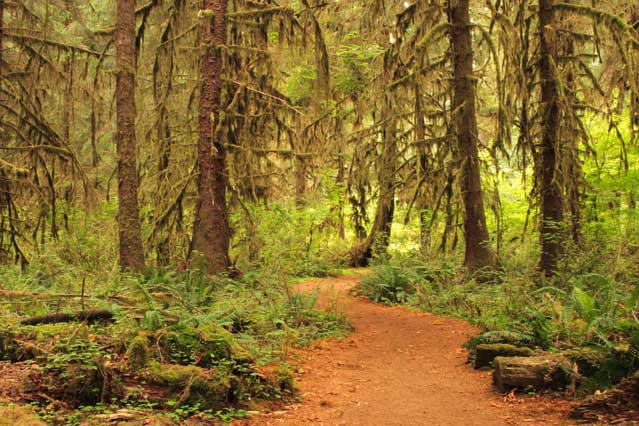
Being alone in the wilderness for a few days heightens your focus, even if you aren't doing anything more risky than backpacking along a trail. You'll notice more, and feel more deeply. Take it to the next level and head soewhere you can't use your cell phone even if you tried. Two suggestions: The , Utah and the , Washington.
Attend Telluride Bluegrass
And bring the right friends
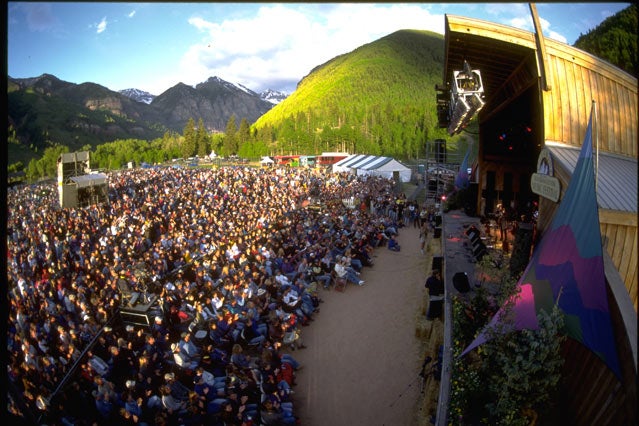
I have received one standing ovation at the , and it wasn't for the time I played fiddle on a side stage. A couple of years ago, when I made my annual pilgrimage to the June event, I brought ║┌┴¤│ď╣¤═° research editor and a college buddy who was deep in the heart of a pre-grad-school three-month hiatus from reality. Which was appropriate. Bluegrass, as it's known by locals, is a four-day bacchanalia of strange costumes and hoppy beer and driving wild music hemmed within the confines of a box canyon that Bob Ross might have conjured if given a large dose of hallucinogens. As I've written in the past, Telluride is not the best festival out there if you're a bluegrass purist. But, for my money, it is the finest place on earth to visit if you wish to briefly pretend that minutia like jobs and electricity bills and taxes and do not exist.
We attended a Night Grass showÔÇöone of the after hours events held at town barsÔÇöat , an underground joint with a wooden floor that bends under dancers. The band was the terrific . Before long, a young woman accused Ryan of spilling his drink on her. If you know Ryan, who moonlights as ║┌┴¤│ď╣¤═°'s spirits correspondent, you know that the notion of him spilling an ounce of a drink is an impossibility. The culprit was my buddy, who was profoundly drunk on music and the Telluride juju and, most of all, whiskey. He was both howling at the moon and throwing his drink at it. But the ceiling and the dancers got in the way. After a couple of failed attempts to subdue him, Ryan and I made the wrenching decision to leave the remarkable show, fireman-hauling my friend out of the bar. The crowd roared its approval.
The next day, around noon, or possibly three, or maybe six in the evening, we saw a forty-something man walking around with flippers and and a snorkel mask and one of those industrial size super soakers. He was spraying his gun in the air and yelling at his retreating wife, “Am I embarrassing you???” We all toasted him and went back to the stage, where sang a song about her father that left us in ruins. That Telluride Bluegrass happens only once a year is a merciful blessing. There's only so much of that stuff a person can take.
To do it right,╠řbuy tickets for 2013 earlyÔÇöthe last two festivals have sold out months in advanceÔÇöand camp in Town Park. (Camp site and four-day pass, $305, .) Buy nightgrass tickets in advance ($20-$35). Make time for the Bloody Mary at the . Bring a jacketÔÇöit gets cold at nightÔÇöand, for God's sake, a water bottle.
ÔÇöAbe Streep
Road Trip Patagonia
Drive the Carratera Austral and then some
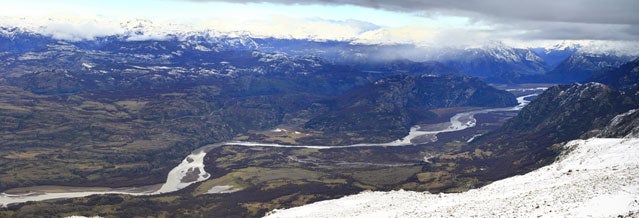
The 770-mile road traversing Patagonia's spine was only opened to traffic in 1988, is still being paved, and requires three different ferry rides to complete. It also accesses some of the world's most spectacular scenery, from deep, glacier-packed fjords to thick Alaska-style rainforest to high alpine grasslands. Take a few weeks in January and February, the only months the ferry from Hornopiren to Calota Gonzales is open, to traverse the route. Fly to Puerto Montt, Chile and rent a car with “libre kilometers,” full insurance, and the papers to cross into Argentina. Drive south and stop for a few days in (created by The North Face co-founder Doug Tompkins) to hike and then head off on a spur to raft some of the world's best whitewater on the Futalefu river with . Next, warm up at the hotsprings spa at and check out Queulat National Park's awe-inspiring hanging glacier. Next, head south to Puerto Tranquillo on the shores of massive Lake General Carerra where you'll tour the famous marble sea caves by sea kayak. If you have a few more weeks, duck into Argentina from Chile Chico on the lake's south shore to Argentina's El Chalt├ęn, the jumping-off point for Mount Fitz Roy, and then on to Perito Moreno Glacier in Los Glaciares National Park. Then cross the border back to Chile to hike in Torres Del Paine. Finish in Punta Arenas, where the rental agency will hopefully let you drop the car.
Dream Up Your Own ║┌┴¤│ď╣¤═° (and Share It)
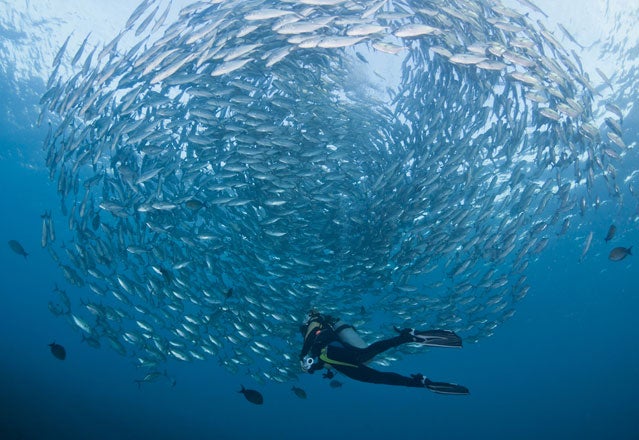
At ║┌┴¤│ď╣¤═°, we get paid to sit around a large oak conference room table and dream up lists like this one. It's one of the coolest parts of our job. We pull ideas from our own past trips, friends and family, and freelancers who utter static bursts of genius through our speaker phone. (Thank you .) Occassionally, we get the chance to leave the office and do some of the things we conjure up. That's another cool part of our job. For example, senior editor Grayson Schaffer just took off for Everest for six weeks to report live from Base Camp. He'll be sharing his experiences by writing dispatches, editing video, and publishing photos on our new Everest page. We understand a few of you might by snickering right now and thinking, “Sure, but I don't have the money to cover such an expense.” That's why we've put together the ║┌┴¤│ď╣¤═° ║┌┴¤│ď╣¤═° Grant. Submit your ultimate adventure online and we'll pick our favorite with the help of our fans, then hand the winner over a $10,000 endowment. We only ask one thing in return, that you team up with us to publish your epic quest, because sharing stories is hands down the coolest part of our job, and you should experience the feeling that results from that too. What are you waiting for? Grab some friends, find a table, and start dreaming.
ÔÇöJoe Spring


